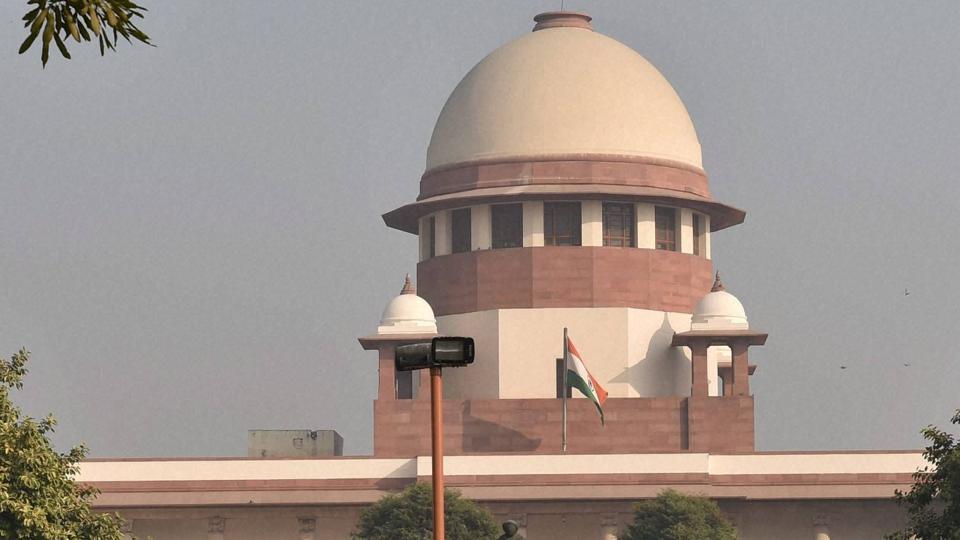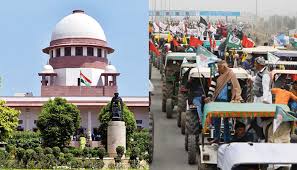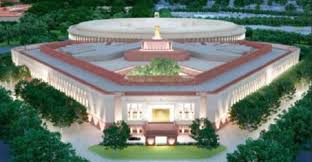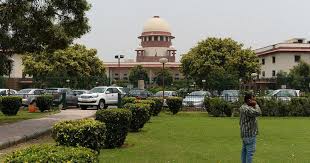Feature
Supreme court Permits woman to abort 26 week fetus due to abnormalities

New Delhi: The Supreme Court on Monday takes strict step after permitting a woman, to abort her fetus in her 26th week of pregnancy as she was suffering from severe cardiac ailments.
A bench of Justice Dipak Misra and M Khanwilkar said the procedure of termination of pregnancy should be carried out “forthwith” at the SSKM Hospital in Kolkata.
The direction came after the bench perused the report of the medical board and the SSKM Hospital, which advised the termination of pregnancy on the grounds that the mother would suffer “severe mental injury” if the pregnancy is continued and the child, if born alive, has to undergo multiple surgeries for severe cardiac ailments.
The bench said “Keeping in view the report of the medical board, we are inclined to allow the prayer and direct medical termination of pregnancy of petitioner.”
The woman and her husband had approached the apex court seeking permission to abort her fetus on grounds of abnormalities which could be even fatal to her.
They have also challenged the constitutional validity of section 3(2) (b) of the Medical Termination of Pregnancy (MTP) Act which prohibits abortion of a fetus after 20 weeks of pregnancy.
The apex court had earlier took on record the report of a seven-member medical board set up by the West Bengal government on its direction and asked the woman to examine the report on her health and apprise it of her stand.
The court, on June 23, had ordered setting up of the medical board of seven doctors of the SSKM Hospital to ascertain certain aspects relating to the health of the woman and her 24-week fetus and submit a report.
The couple, in the plea, had attached a report suggesting that the fetus suffered from serious abnormalities, including cardiac issues. This report had said if the birth was allowed, the baby may not survive even the first surgery and, moreover, the foetus could be fatal to the mother as well.
The court had on June 21 sought responses from the Centre and West Bengal government on the plea. The petition has said that the woman had suffered immense mental and physical anguish after coming to know of the abnormalities on the 21st week of her pregnancy.
This petition challenges the constitutional validity of section 3(2)(b) of the Medical Termination of Pregnancy Act, 1971 (MTP) restricted to the ceiling of 20 weeks stipulated therein.
“This challenge is to the effect that the 20 week stipulation for a woman to avail of abortion services under section 3(2) (b) may have been reasonable when the section was enacted in 1971 but has ceased to be reasonable today where technology has advanced and it is perfectly safe for a woman to abort even up to the 26th week and thereafter,” it said.
The plea has said the determination of fetal abnormality in many cases can only be done after the 20th week and, by keeping the ceiling artificially low, women who obtain report of serious fetal abnormalities after the 20th week have to suffer excruciating pain and agony because of the deliveries they are forced to go through.
Entertainment
Meghalaya Reserves Legalized Gambling and Sports Betting for Tourists

The State Scores Extra High on Gaming-Friendly Industry Index
Meghalaya scored 92.85 out of 100 possible points in a Gaming Industry Index and proved to be India’s most gaming-friendly state following its recent profound legislation changes over the field allowing land-based and online gaming, including games of chance, under a licensing regime.
The index by the UK India Business Council (UKIBC) uses a scale of 0 to 100 to measure the level of legalisation on gambling and betting achieved by a state based on the scores over a set of seven different games – lottery, horse racing, betting on sports, poker, rummy, casino and fantasy sports
Starting from February last year, Meghalaya became the third state in India’s northeast to legalise gambling and betting after Sikkim and Nagaland. After consultations with the UKIBC, the state proceeded with the adoption of the Meghalaya Regulation of Gaming Act, 2021 and the nullification of the Meghalaya Prevention of Gambling Act, 1970. Subsequently in December, the Meghalaya Regulation of Gaming Rules, 2021 were notified and came into force.
All for the Tourists
The move to legalise and license various forms of offline and online betting and gambling in Meghalaya is aimed at boosting tourism and creating jobs, and altogether raising taxation revenues for the northeastern state. At the same time, the opportunities to bet and gamble legally will be reserved only for tourists and visitors.
“We came out with a Gaming Act and subsequently framed the Regulation of Gaming Rules, 2021. The government will accordingly issue licenses to operate games of skill and chance, both online and offline,” said James P. K. Sangma, Meghalaya State Law and Taxation Minister speaking in the capital city of Shillong. “But the legalized gambling and gaming will only be for tourists and not residents of Meghalaya,” he continued.
To be allowed to play, tourists and people visiting the state for work or business purposes will have to prove their non-resident status by presenting appropriate documents, in a process similar to a bank KYC (Know Your Customer) procedure.
Meghalaya Reaches Out to a Vast Market
With 140 millions of people in India estimated to bet regularly on sports, and a total of 370 million desi bettors around prominent sporting events, as per data from one of the latest reports by Esse N Videri, Meghalaya is set to reach out and take a piece of a vast market.
Estimates on the financial value of India’s sports betting market, combined across all types of offline channels and online sports and cricket predictions and betting platforms, speak about amounts between $130 and $150 billion (roughly between ₹9.7 and ₹11.5 lakh crore).
Andhra Pradesh, Telangana and Delhi are shown to deliver the highest number of bettors and Meghalaya can count on substantial tourists flow from their betting circles. The sports betting communities of Karnataka, Maharashtra, Uttar Pradesh and Haryana are also not to be underestimated.
Among the sports, cricket is most popular, registering 68 percent of the total bet count analyzed by Esse N Videri. Football takes second position with 11 percent of the bets, followed by betting on FIFA at 7 percent and on eCricket at 5 percent. The last position in the Top 5 of popular sports for betting in India is taken by tennis with 3 percent of the bet count.
Local Citizens will Still have Their Teer Betting
Meghalaya residents will still be permitted to participate in teer betting over arrow-shooting results. Teer is a traditional method of gambling, somewhat similar to a lottery draw, and held under the rules of the Meghalaya Regulation of the Game of Arrow Shooting and the Sale of Teer Tickets Act, 2018.
Teer includes bettors wagering on the number of arrows that reach the target which is placed about 50 meters away from a team of 20 archers positioned in a semicircle.
The archers shoot volleys of arrows at the target for ten minutes, and players place their bets choosing a number between 0 and 99 trying to guess the last two digits of the number of arrows that successfully pierce the target.
If, for example, the number of hits is 256, anyone who has bet on 56 wins an amount eight times bigger than their wager.
























